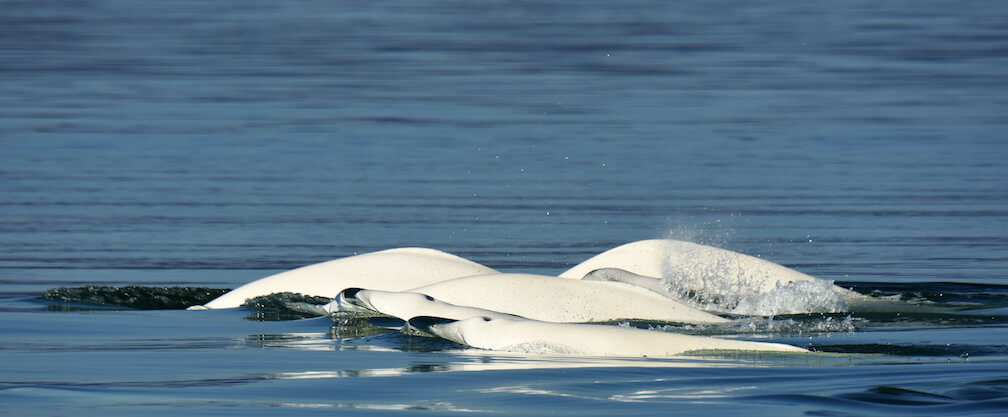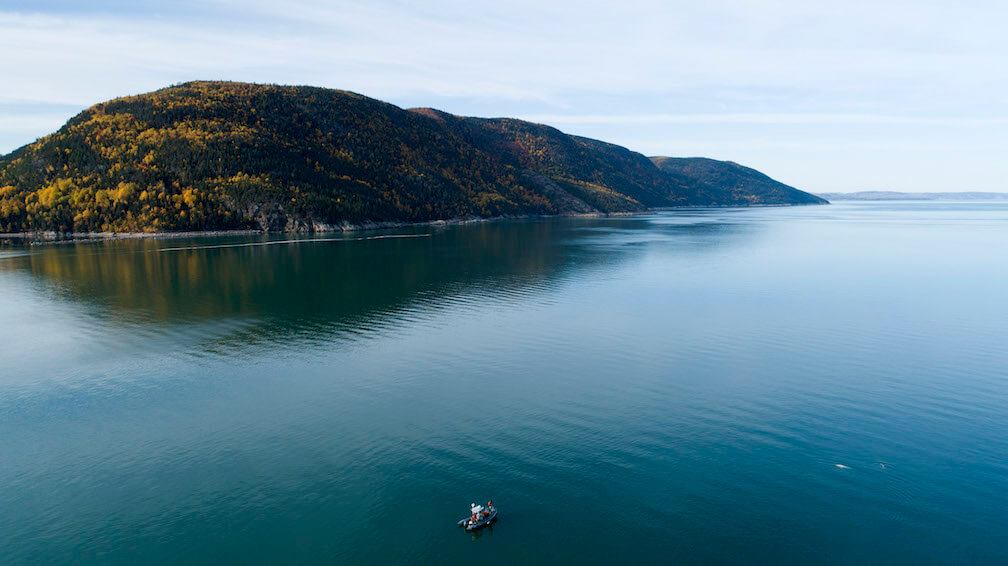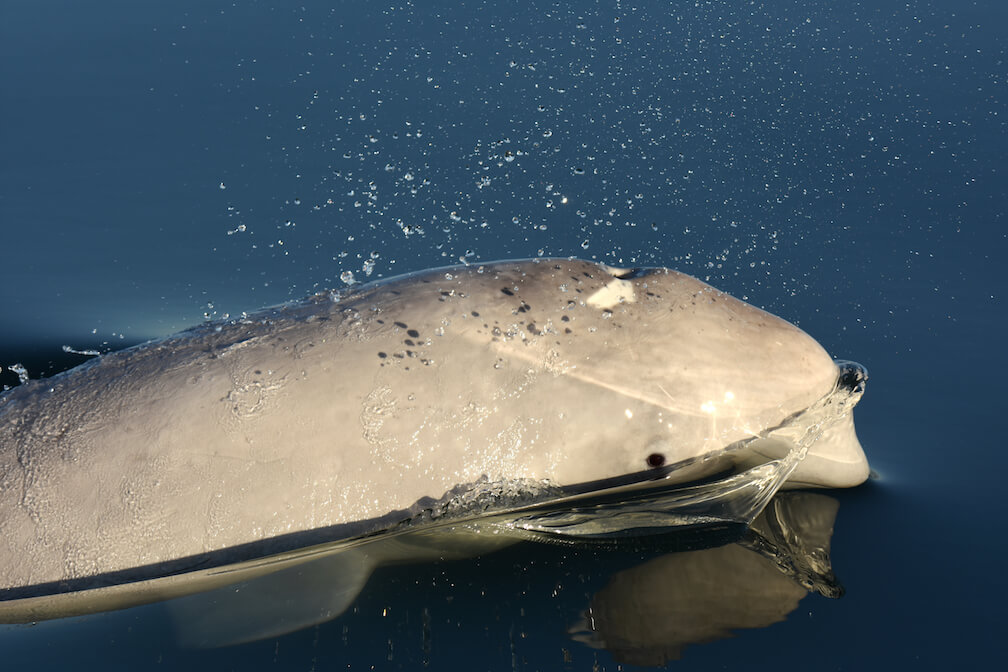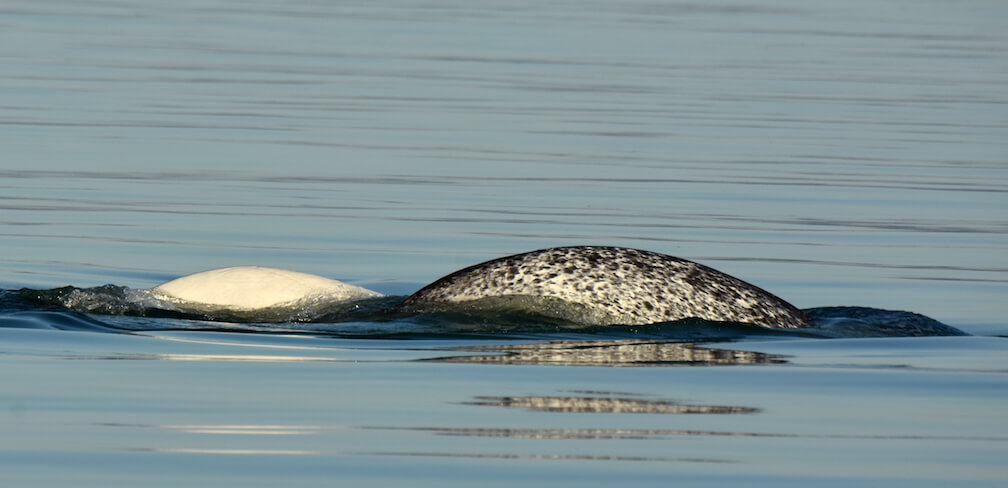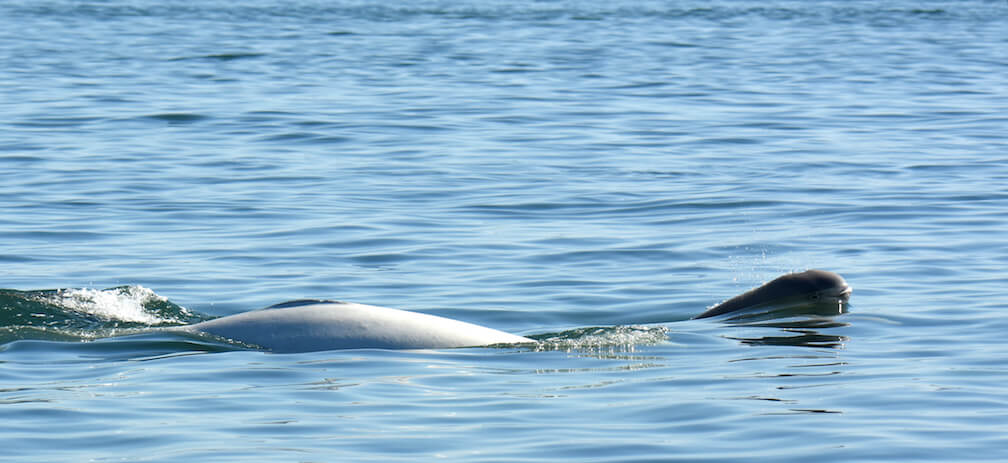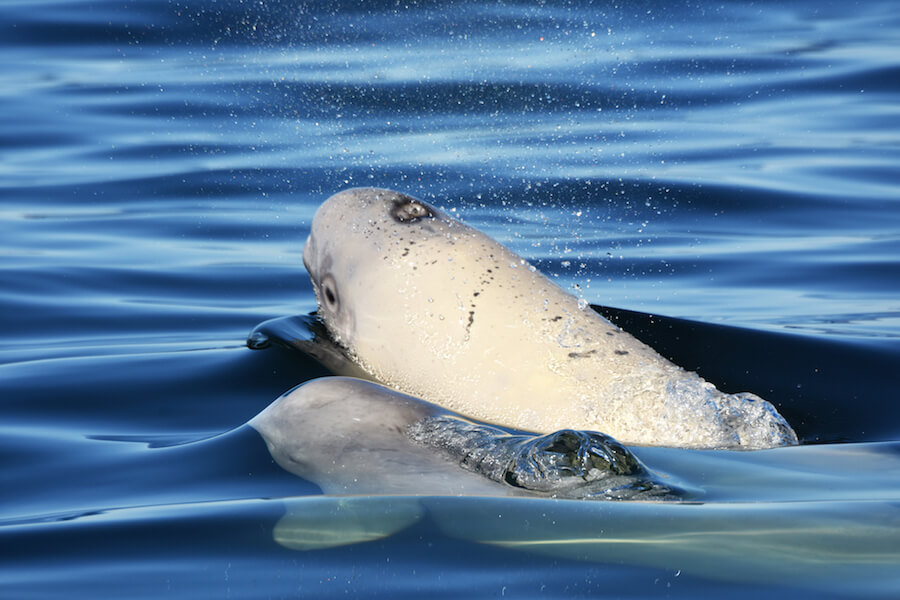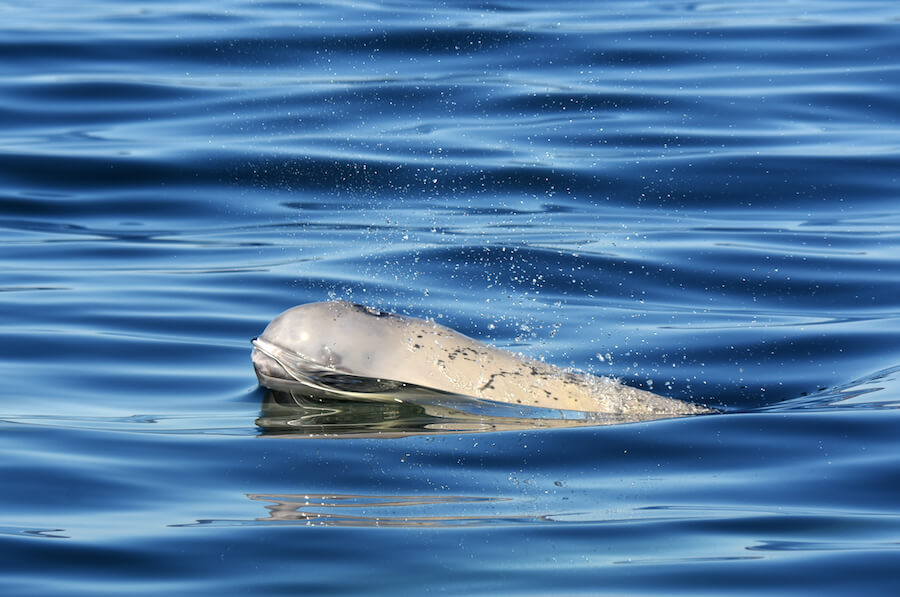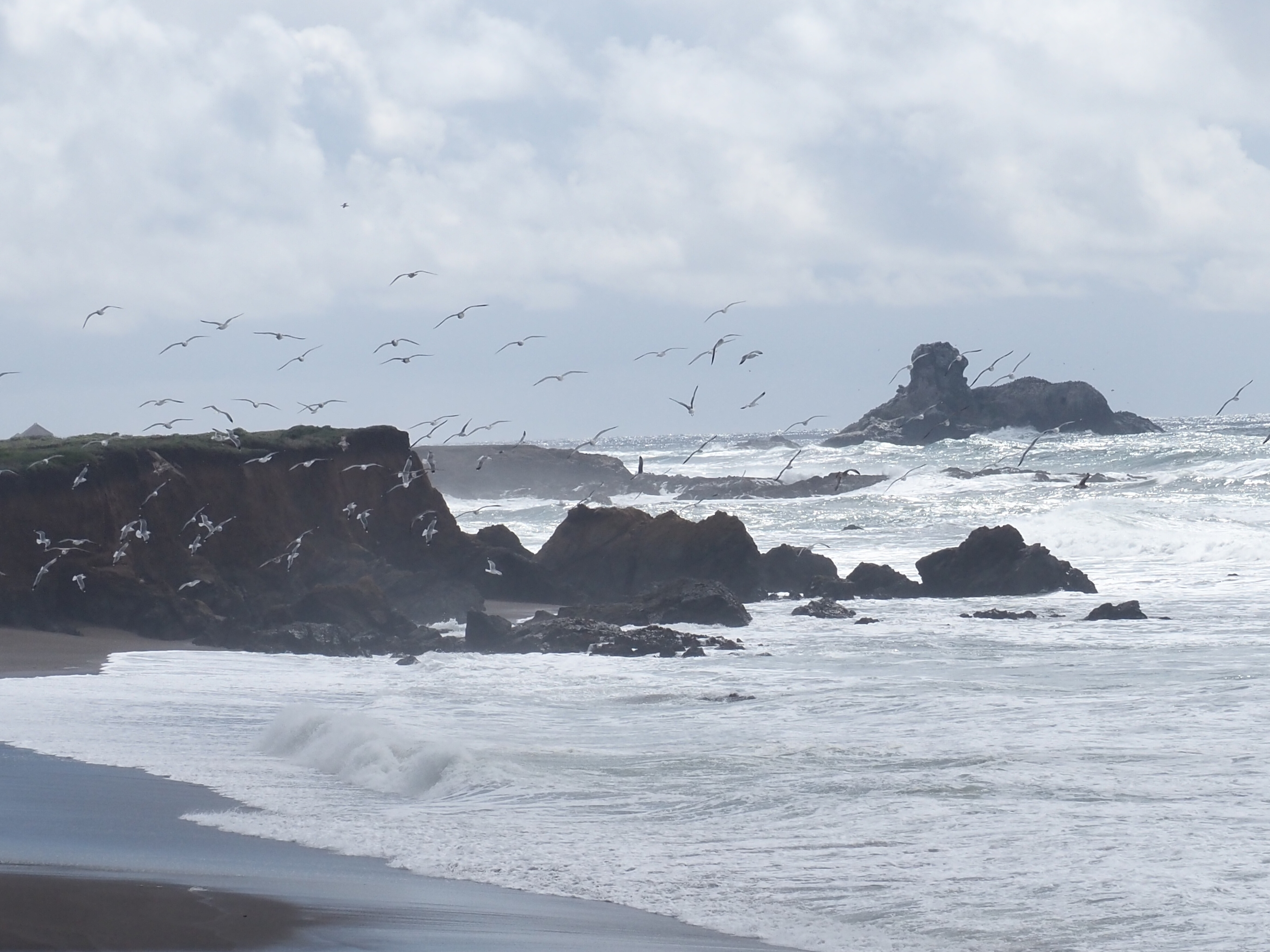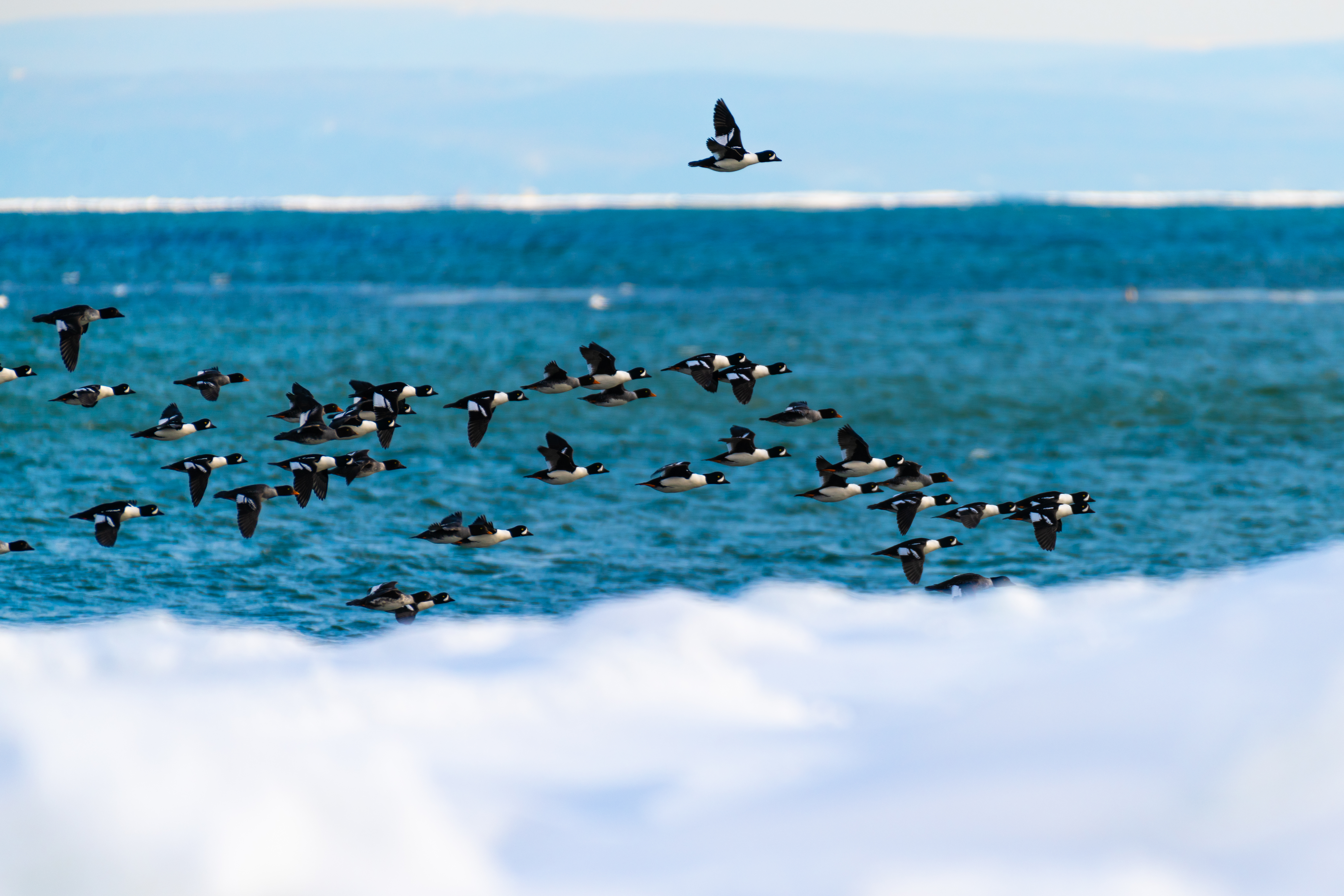October 9: an Indian summer day, a calm St. Lawrence, spectacular fall foliage… the BpJAM sets sail for one of its last outings of the year. It’s a thrill to get back on this small inflatable craft after three intense weeks of conducting biopsies coupled with photogrammetry for a research project in collaboration with the Université du Québec à Montréal, where the entire research team was aboard the Bleuvet.
We kick off this beautiful autumn day with two contacts numbering about thirty individuals each. In our jargon, the term “contact” means the moment we begin studying a herd of belugas by recording visual data and photographing the animals. In these two herds, there is a nice diversity of adults and juveniles. But what matters most to us is the number of calves: we tallied a minimum of seven calves combined for these two encounters!
Additionally, we recognize DL9093, DL9065, DL1278 swimming with a calf (multiple observations with a calf will be needed to confirm that it is hers, however) and the beluga we call “Domino” in the field. It is recognized by the scars on the rear of its right flank reminiscent of a domino.
Later that day, we make a third contact. Once again, we locate a medium-sized herd numbering 50 to 60 individuals. But unlike the two previous herds, these groups are mainly composed of adults, which leads us to suspect that we’re dealing with a herd of bulls.
After two hours of photo-identification, we decide to launch the drone in order to get a brief glimpse into the daily life of our small white whales. We therefore move away from the herd to prevent our boat from interfering with the animals’ behaviour. While our little spy hovers over a group of belugas several hundred metres away, another group of younger individuals approaches the craft.
I observe the dorsal ridges without recognizing a single one; they are therefore belugas that have not yet been photographed today. In the middle of the young belugas, a mottled back catches my eye. I tell Tim and he guides the drone closer to the boat. The group resurfaces, porpoising a few hundred metres from the boat. The narwhal is among them! Subsequently, the group calms down and moves along unhurriedly, remaining on the surface only briefly. However, there is a great deal of vocalizations. Observing the different clusters of animals, we notice that the narwhal has joined a new group.
After taking a few videos and photos to document the encounter, we decide to head back to our port of call in Tadoussac. Hopefully the data we collected can tell us more about this most fascinating interspecific association.


